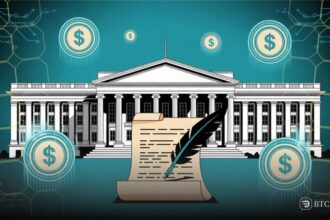Deep Freeze has been introduced by the XRP Ledger (XRPL) as a new amendment that aims to improve tokenized asset management for institutional issuers. It’s developed for issued tokens and enables issuers to freeze all assets within a given account on the protocol level.
It doesn’t impact XRP, the XRP Ledger’s indigenous crypto, but only issued tokens within the network’s environment. Deep Freeze remedies the shortcomings in the current trustline freeze mechanism to grant issuers more control over tokens issued.
Trustline Freeze was only able to stop new transactions but enable existing balance transfers, lessening its use for compliance situations. Deep Freeze fills the gap by locking down outgoing transactions from a frozen account entirely, rendering it a more secure mechanism.
It was proposed as XLS-77d and will enable institutions to handle tokenized real-world assets, stablecoins, and other financial products on the XRP Ledger.
Additionally, the existing Ripple’s RLUSD, Societe Generale Forge’s EURCV, and Braza Bank’s BBRL stablecoins have already made use of the compliance tools in XRPL and would stand to gain by implementing Deep Freeze.
The new feature boosts appeal for major stablecoin issuers like Circle, supporting onboarding and ensuring adherence to global compliance standards
Deep Freeze bridges XRPL and finance
However, Deep Freeze empowers issuers to satisfy changing regulations by not allowing transfers out of accounts marked for legal or compliance purposes. Issuers can impose the freeze transparently on-chain when a regulator requires the freezing of a designated account.
Central banks, payment institutions, and asset managers that wish to tokenize assets can tap into the ability to fit into conventional regulatory systems using Deep Freeze.
Providing account-level freezing, the amendment fills the gap of regulatory trust between institutional finance and blockchain innovation. Deep Freeze bolsters the utility of XRPL for compliant and secure asset tokenization in a swiftly changing digital landscape.
Amendment voting by validators and participants can help promote the adoption of Deep Freeze via the amendment mechanism. However, this process supports the ongoing evolution of the XRPL network.
Nonetheless, Ripple has explained in detail how users can participate in the voting mechanism. This allows them to influence the future of the ledger.







